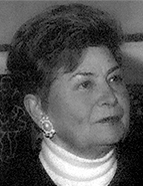

His intellectual education began naturally in primary school, where he finished 4th grade with flying colours, and continued at the Diogo Cão Secondary School, where he found very well-prepared teachers. He completed the Complementary Course in Literature in 1944 with a grade of 17. In addition to history, he liked literature - “because literature is also history” - Latin and, above all, philosophy, to which his great admiration for Walter de Vasconcelos, a teacher of this subject, contributed. He later stated : “I came to history and philosophy and at the time I was more interested in philosophy than history” (Interview, p.135).
His academic success and personal interest led him to pursue his studies and graduate in Historical and Philosophical Sciences, which meant moving to the metropolis as there was no such course in Angola
. He arrived in Lisbon in the autumn of 1944 and shortly after his arrival, he took the entrance exams for the Historical and Philosophical Sciences course in October. During the four years of the course, his teachers in the field of History were Ferreira de Almeida, Mário de Albuquerque, Manuel Heleno, Artur Gusmão, Virgínia Rau and Silva Marques, and in Art History, Mário Tavares Chicó. In Philosophy and Psychology, he was taught by Délio Santos, Luís Schwalbach and Delfim Santos. She offers the following overall assessment of her teachers: “Most were people from the regime, or monarchists protected by the regime,” although she has fond memories of Vieira de Almeida and Delfim Santos (Interview, p. 136). Her classmates in different subjects included Lindley Cintra, António Ferro and Mário Soares; she also spent time with Urbano Tavares Rodrigues, Augusto Abelaira, Francisco da Gama Caeiro and Mário Pinto de Andrade. Attending the Casa dos Estudantes do Império (House of Students of the Empire) brought her into contact with people who would later become leading figures in the independence movements of the former colonies. After completing the four-year course, she prepared her dissertation, entitled Para o estudo do Problema Físico e Filosófico da Causalidade (Towards a Study of the Physical and Philosophical Problem of Causality), which she defended on 28 July 1949, thus obtaining her degree with a final average of 13, at the time one of the highest grades awarded in the 1944/1945 to 1947/48 academic years. In the meantime, she had completed four subjects in the Pedagogical Sciences course, which qualified her for a professional career. And in fact, in October 1949, she was accepted as a secondary school teacher in Faro, at Colégio Farense, a private girls’ school where she taught for two years. It was her first job. Despite her love of teaching, her main desire was to devote herself to historical and archaeological research. She approached Manuel Heleno, who had been her archaeology teacher, seeking guidance in pursuing this ambition. He recommended her to the Instituto de Alta Cultura (I.A.C), highlighting in his report her “ability to bring distinction to the Institute”. Her work was limited to research and archaeological practice, based at the Dr. Leite de Vasconcelos Ethnological Museum, where she was recognised for her methodological skills, which she would go on to perfect through practice and knowledge gained from working with renowned researchers.
This work is financed by national funds through FCT - Foundation for Science and Technology, I.P, in the scope of the projects UIDB/04311/2020 and UIDP/04311/2020.
